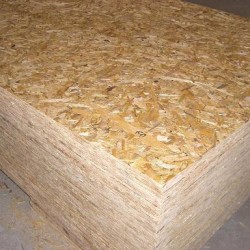Learn About Types of Subfloor and Underlayment
Below the finish floor, and above the floor joists (or concrete slab), is the subfloor. Sometimes, you’ll have an underlayment that comes between the subfloor and the finish floor, too. These terms are confusing because sometimes you’ll want both, sometimes not. And other times, the same material can be used as both subfloor and as underlayment.
You have several types of subfloor and underlayment options available. Let’s take a look, and I’ll do my best to separate the terminology.
Solid-Wood Subfloor
In modern home construction and renovation, the solid-wood subfloor isn’t seen very much. If anything, this “subfloor” is the actual, finish floor of solid wood that the renovator has decided to lay over with another type of flooring.
Plywood Subfloor
Plywood has been used as a subfloor for quite some time now. Plywood comes in 4’x8′ panels and is laid down in that size straight onto the joists. The plywood is laid with its grain perpendicular to the joists.
You can’t just run down to Home Depot and grab any old kind of plywood. The Half-Assed side of me says, “Yes, it probably will last,” but armed with just a tiny bit of information, you can certainly buy the right kind of subfloor plywood, and it’s like this:
Plywood is rated for certain uses. In this image shown, the first figure refers to the ply’s rating on roofs; the second figure applies to floors. So, ignoring the first number, we can see that this plywood is rating for flooring joist which are 24 inches on-center.
The Engineered Wood Association is a good resource for plywood ratings (apparently, we don’t call it plywood anymore? Well, whatever…).
OSB Subfloor and Underlayment

OSB stands for oriented-strand board, and it works as both subfloor and underlayment (amazing, huh?).
Not to be confused with particleboard, OSB is serious stuff, and it’s bonded with resins that can even withstand exterior weathering. In fact, OSB is often used for exterior applications. OSB gets graded by the Engineered Wood Association, too.
Plywood Underlayment
If you’ve got a subfloor, but this subfloor is not smooth and flat enough for your finish flooring, you may decide to lay down plywood underlayment. This plywood underlayment does not have to be as strong as plywood subfloor because it’s not such a structural material.
Particleboard Underlayment
Yes, underlayment only here. Particleboard is not a structural material. Wood chips are bonded together, and it’s nowhere near as strong as OSB or plywood.